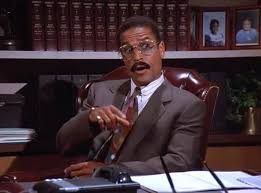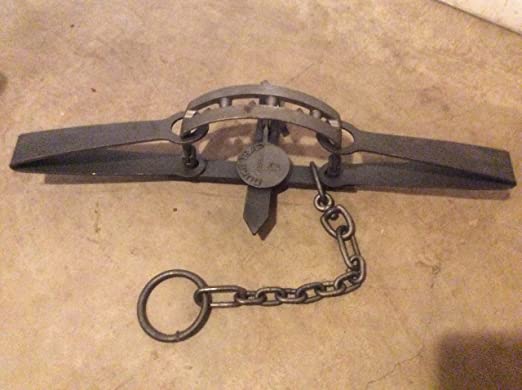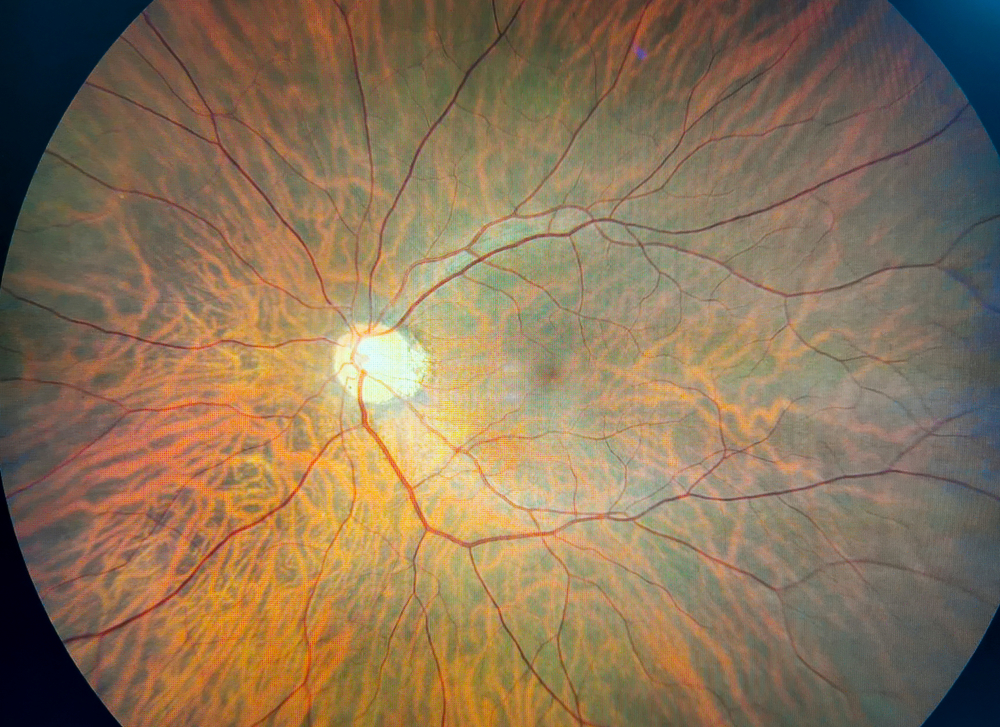PJ the Wrong Way Part I: Product Liability and Hot Coffee. “It’s outrageous, egregious, preposterous.”
“Yeah, that’s going to be a problem. That’s going to be a problem for them.”
In so few words, Jackie Chiles, legendary consumer rights warrior, issued a battle cry, distilling public safety litigation into its most primal essence. Dangerous products impose a cost upon the consumer. Product liability lawsuits reallocate the cost w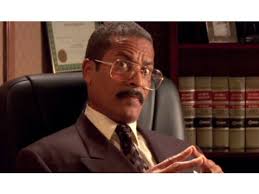 here it belongs: the manufacturer. A dangerous product is a problem, but this time, it will be a problem for them.
here it belongs: the manufacturer. A dangerous product is a problem, but this time, it will be a problem for them.
This article is the first installment in a series that explores the evolution of personal jurisdiction as it relates to product liability litigation, concluding with a discussion of two personal jurisdiction cases pending before the Supreme Court. In those consolidated cases, Ford Motor Company is asking the Court to severely limit the number of courts that can hear a case against a company that serves a regional or national market.
This installment explores product liability law. Product liability law includes actions against large manufacturers, such as Ford, for defective products. Personal jurisdiction is often intertwined with product liability, as manufacturers may produce a product in one state that ends up injuring someone in another state. Should the injured person be able to sue the manufacturer in her home state, even if the company has no contact with it? This is the notion of personal jurisdiction: whether a court has authority over a specific person. However, the discussion personal jurisdiction cannot begin in earnest until we cover the basics of product liability law.
Even when setting personal jurisdiction to the side, product liability law can be complicated. This article will only scratch the surface. Nevertheless, defined reductively, if a manufacture sells a dangerous goods, it can be sued by an individual injured by the product. There are a lot of caveats to this statement, however.
The most common types of product liability suits are (1) manufacturing defect and (2) negligent design. If a product is not inherently dangerous, but due to some error in production, one specific unit, or series of units, were produced with flaws, it could lead to manufacturing defect claims. For example, if a pair of workers on Ford’s production line simply forgot to put seatbelts in a car, it would be a manufacturing defect. On the other hand, claims of negligent design arise where the manufacturer designs and produces a product that is inherently and unreasonably dangerous. Think lawn-darts.
When a large number of people are injured in the same way by the same product, they can join together and file a mass tort or class action lawsuit. Class action lawsuits against pharmaceutical companies are a prime example—we have all seen the commercials: “Have you taken drug X and experienced any of the following effects” (insert rapid scroll of uncountable conditions in 4 point font) “you may be entitled to a substantial cash award!!” Of course, ominous background music and an aggressive male announcer fill out the commercial. As an aside, class actions are some of the most lucrative actions, from an attorney’s standpoint. Even if each claimant only receives a small amount, the sum of all the claims will deliver a nice attorney fee.
To determine whether a company is liable for designing a dangerous product, a court will evaluate whether the product is unreasonably dangerous. There are cases upon cases discussing the definition of unreasonably dangerous, but in one way or another, a court weighs the utility of the product versus the danger it poses.
Lawn darts. Someone thought, I bet kids would love to chuck spears around the yard with their friends, and then thought, I’m going to make a killing selling medieval ranged weaponry. In retrospect, I’ll admit my youth was marginally more exciting for the handful of times my friends and I risked our lives playing with those javelins, but was that marginal increase in excitement reasonable  considering the risk of a ‘bullseye’? Although the answer is quite clear in this instance, the danger of using lawn darts was not justifiable in light of the role the product played in our society.
considering the risk of a ‘bullseye’? Although the answer is quite clear in this instance, the danger of using lawn darts was not justifiable in light of the role the product played in our society.
Now consider a hay thresher. An obviously dangerous piece of equipment. Operators are subjected to the risk of serious injury and death, given their proximity to large, motorized, and moving parts. But what role does it serve? Quite an important role, to be sure. Immeasurably more so than lawn darts.
How does product liability law handle situations where a dangerous product serves an important purpose? One approach is to determine whether a safer product could be designed in an economically reasonable manner. Using dynamite to fish is effective (I’ve seen Crocodile Dundee II), but using a net is nearly as effective and far less dangerous. Since the alternative product is reasonably effective at a reasonable cost, you won’t see Dave’s Dynamite Fish’n Tackle anytime soon.
What about the Thresher? If there were an alternative design, it must be economically feasible, which means it satisfies two questions. First, is the newly designed thresher affordable? If the new design is safe, but cost as much as an MRI machine, most farmers wouldn’t be able to farm wheat. Second, is the new design effective? If the safer thresher can only process one stalk of wheat at a time, it’s not nearly as efficient as necessary to perform the task in question.
A parallel consideration to whether a product is unreasonably dangerous, is whether the type of injury sustained was foreseeable. Foreseeability is largely the reason we encounter all those wonderful warning labels. Why do those silica packages in your beef jerky say, “DO NOT EAT”? Someone at the beef jerky plant called a lawyer, who thought it reasonably foreseeable that someone (I’m not sure who) might think, “Well since this is in the same bag as food, it must be food . . . .” The same lawyer represented the baby stroller manufacturer whose product warns to “Remove Child Before Folding.”
Although ridiculous at times, warning labels are a result of product liability lawsuits. Underlying the labels are lawsuits where a judge or jury found some company responsible when a consumer misused its product, but in a foreseeable way. Take aftermarket automobile tires. If a company is selling high performance race tires designed for use at speeds up to 100 mph, it is probably foreseeable that some customers will exceed that speed threshold by 10 to 15 mph.
Foreseeability is fluid, situational, and hard to define. Different courts may reach different conclusions regarding foreseeability. An Alabama court considered whether a teenager’s attempt to shake a vending machine to get a free drink was foreseeable when he was injured in the act. It did not. However, when the same question was put to a court in North Carolina and a court in New Jersey, both rule in opposition to Alabama.
It’s easy to say, “Well, only an idiot would eat a desiccant or fold their child into a stroller. If you are injured doing that, you’re just an active participant in natural selection.” This is usually followed by some underhanded comment about how lawyers have made everything in life worse. “You can sue anyone for anything. Didn’t some woman get millions of dollars for spilling coffee on herself?” Well, the answers to those questions are yes and yes. But every lawsuit serves a purpose. Not just for the litigants involved, but all of society.
To illustrate this point, I am going to discuss that famous (and admittedly dated) McDonald’s hot coffee case. A New Mexico jury awarded Stella Liebeck $3,000,000 to compensate her for being burned by hot coffee. This happened in 1992 mind you, so three mill was a lot of money. 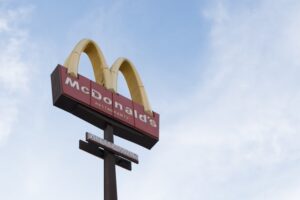
First, it’s important to know the facts. Ms. Liebeck went through a McDonald’s drive through and bought a coffee. The car’s driver pulled into a parking spot so she could add cream and sugar while the vehicle was parked. She took the lid off and placed the cup between her thighs near her crotch. While tending to her cream and sugar, the cup fell backwards spilling the coffee all over her lap. If that doesn’t make you cringe, consider that the coffee was 190°F. If you’ve ever scalded your hand under a faucet, it wasn’t this hot. Your coffee pot at home probably heats your coffee to 140°F.
Ms. Liebeck suffered third-degree burns all over her lap and thighs. Third-degree burn classification means that she was badly blistered and sustained burns that completely passed through the skin and damaged the tissue below. Inarguably, she was injured and injured badly. Nevertheless, $3 million for localized burns may still seem outrageous. Admittedly, I’ve been personally involved in wrongful death lawsuits that resolved for less than $1 million, let alone three.
The reality is that her award was not large because of the injuries she sustained. The jury awarded her $200,000 in compensatory damages. Compensatory damages are a combination of economic damages, such as medical bills and lost wages, and noneconomic damages, like pain and suffering. For Ms. Liebeck, the remaining $2.8 million award had nothing to do with her economic or noneconomic damages. She was awarded punitive damages because of the way the defendant, McDonald’s behaved. Punitive damages are exactly what they say they are: punishment. More on this in a moment, but first, we will discuss the basic components of a lawsuit: liability and damages.
Liability is responsibility for another’s injury. Damages are the extent of the injury. Lawyers value cases based on these two factors. If a potential client has been gravely injured in a car accident, but there is no apparent evidence that the other driver did something negligent to cause the accident, the value of the case will be low, despite the extensive damages. Similarly, if the potential client was struck by someone running a red light while under the influence, liability is clear, but if the potential client only suffered minor whiplash, the value will also be low. Whether liability or damages, if either end of the equation is flawed, the case will have little value. Almost all of the time . . . .
In special cases, the jury concludes the defendant has acted in such an egregious manner that simply ordering it to pay the injured party compensatory damages is insufficient. If a plaintiff can not only prove a defendant did a bad act, but that the defendant is a bad actor, a jury can assess punitive damages. Where compensatory damages repay the injured party for their medical bills and pain and suffering, punitive damages punish the bad guy for acting in a reprehensible manner.
At the conclusion of the McDonald’s case, the jury decided that McDonald’s had behaved in an egregious fashion. Why? Because of the facts of the case. A good place to start is with the temperature of the coffee.
How hot is 190°F liquid?
In average home coffee maker heats the beverage to somewhere between 135°F and 150°F. At 150°F, coffee is hot enough to cause first-degree burns, redness, but no blistering, in relatively short order and perhaps second-degree burns, blistering and swelling, with prolonged exposure.
Standard practice for fast-food chains other than McDonald’s is to sell coffee between 150°F and 160°F. At this temperature, coffee can cause second-degree burns after 5 to 10 seconds. Third-degree burns, burns damaging tissue below the skin, are possible, but only if exposure lasted 20 second at full temperature—placing one’s hand in the coffee pot could theoretically cause third-degree burns, but spilt coffee would not. It begins to cool immediately.
McDonald’s coffee was sold between 180°F and 190°F. At that temperature, hot coffee will cause third-degree burns within 3 seconds. As a reminder, third-degree burns are defined as burns that have penetrated through the entire dermis, searing the exposed tissue underneath.
The answer is hot . . . very hot . . . .
At trial, a company official revealed that the burn risk was well known to the company. In fact, it recorded over 700 incidents where people were seriously burned by its coffee. Despite the known risk of selling coffee at 190°F, the practice continued as a company-wide policy.
The precise reason McDonald’s sold such hot coffee was never made clear. At one point a company witness said the high temperature was for the benefit of drive-through customers. Commuters drive long distances and the higher temperature kept the coffee hot for the duration. However, plaintiff’s counsel turned up a McDonald’s market study evaluating the way drive-through customers drank coffee. According to McDonald’s own data, most people drink the coffee immediately and quickly, not slowly over a long commute.
Later in the proceedings, McDonald’s conceded that hotter coffee “just tastes better.” Undoubtedly, the statement was backed with research. Everything in McDonald’s operations is tracked, measured, and analyzed. Even the estimated cost of resolving a predictable number of hot coffee injury complaints. Would it be more profitable to lower the temperature of the coffee, or to pay off a few injured customers in settlements?
Needless to say, the judge and jury were not impressed. When the jury deliberated, it reviewed the horrific pictures of the injury. The jury concluded that McDonald’s knew injuries like those sustained by Ms. Liebeck were inevitable unless it changed its policy. It did not, suggesting the company would prefer to compensate a few injured people and continue selling the coffee at the high temperature, rather than making sure its customers were safe. This distasteful business decision opened the door to punitive damages.
Why $2.8 million dollars? Why not $1 million, or $20 million? As stated earlier, punitive damages are assessed to punish the defendant. The $2.8 million-dollar punitive damages award was determined by looking at how much money McDonald’s made from its “extra-hot” coffee. It turns out that in 1992, McDonald’s sold $1.4 million of coffee on an average day. The jury decided that a suitable punishment for the company was to forfeit two days’ worth of coffee revenue, or $2.8 million. Seems fair, right?
Another way of looking at punitive damages is to characterize them as a fine. The government, by way of judicial process and jury deliberation, required McDonald’s pay a $2.8 million fine for its wrongful conduct. But then why does Ms. Liebeck get a huge chunk of cash? Shouldn’t the government keep the money, just like other fine payments? In fact, there are a number of legal scholars and policy makers that think that punitive damages should be retained by the government. But isn’t there something American about burying the woman in a huge pile of cash for beating up a huge corporation. To the victor go the spoils.
The verdict was successfully appealed. The punitive damages award was found to be an unconstitutional violation of McDonald’s due process rights. Upon remand from the appellate court, the trial judge reduced punitive damages to about half-of-a-million dollars.
The dramatic reduction comports with domestic jurisprudence regarding excessive punitive damages. The Supreme Court considered excessive damages under the lens of the due process clause of the Fifth and Fourteenth Amendments, ruling that excessive punitive damages constitute a deprivation of property without due process of law, rendering such a verdict unconstitutional and unenforceable.
What, then, is excessive? The Court has clarified that punitive damages must be considered in relationship to the amount of compensatory damages being awarded. It has never provided a set formula, but through various cases, it has provided some guidelines. It once opined that nearly any punitive damages award in excess of 10:1 ratio with compensatory damages would be unconstitutional (10:1 would amount to $2 million in the McDonald’s case) and once found an award of 4:1 unconstitutional ($800,000). Yet the Court once affirmed an award with a 526:1 ratio versus compensatory damages, citing exceptionally egregious conduct.
Regardless of the final amount paid to Ms. Liebeck, the verdict sent a message to fast-food retailers: don’t sell beverages at a temperature so hot it will cause immediate third-degree burns. As a result of the suit, McDonald’s, the world’s largest fast food chain, changed its policy and lowered the temperature of its heated beverages. The lawsuit resulted in a substantial change in the operations of one of the world’s most recognizable brands. The change initiated and monitored by the company itself. Not a single bureaucrat involved. This is the power of a product liability lawsuit.
I’ll end this installment with a couple thoughts. First, even if a lawsuit sounds frivolous, ridiculous, or obscene, there may very well be a reasonable basis for the action. Second, what may seem to be an outrageous verdict could very well be advancing a public policy to discourage a particular behavior. Third, and this may be the most important point, the vast majority of attorneys would never file a frivolous, petty lawsuits. Why? It’s simple. There’s no money in it.
That’s it until next time when we take our first real look at personal jurisdiction.
Benjamin W. Bryant, JD
Neumann Law Group

